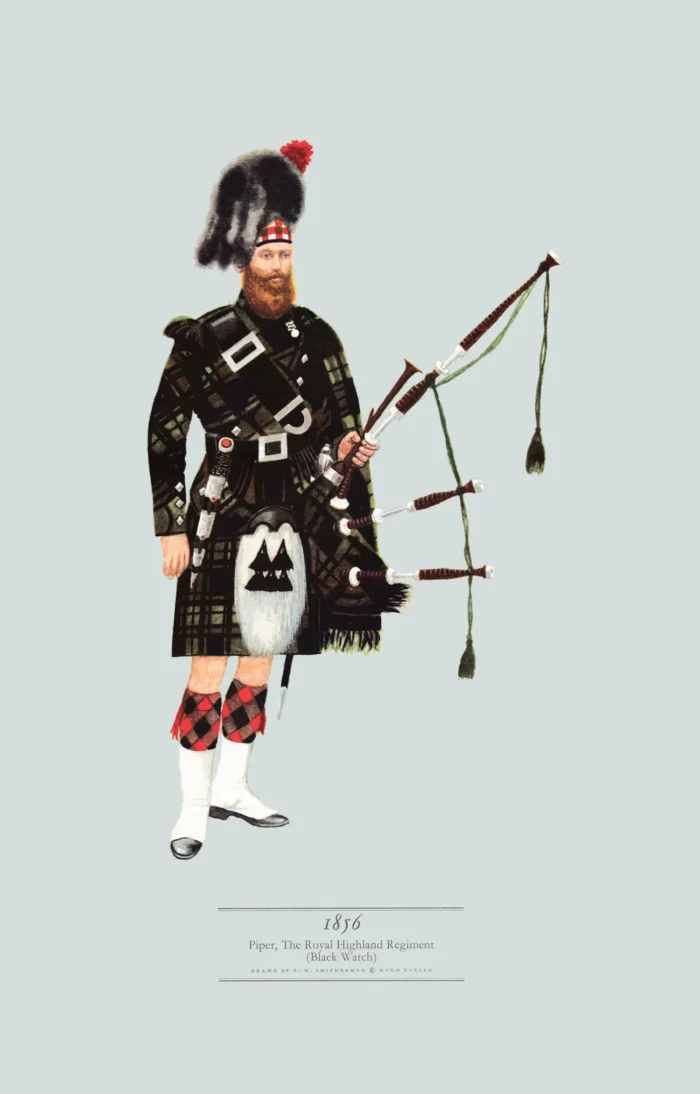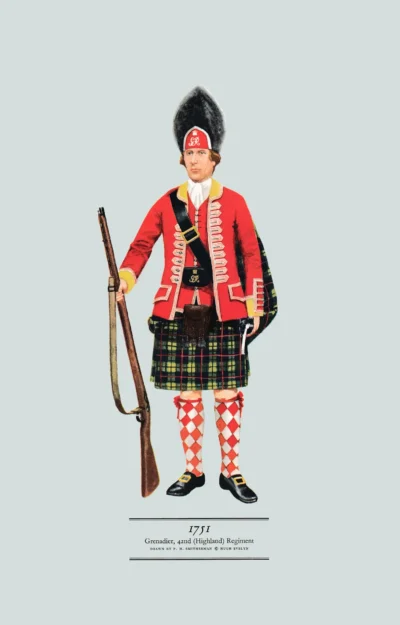Piper, The Royal Highland Regiment (Black Watch), 1856
£12.00
Raised 1739; from 1881 the Black Watch (Royal Highlanders); from 2006 Royal Regiment of Scotland – 3 SCOTS (scroll down for a more detailed Description)
Published 1963 by © Hugh Evelyn Limited; drawn by Colonel Philip Henry Smitherman (1910-1982), Royal Corps of Signals
Size: c. 24.5 x 37.5 cm [9 ½ ″ x 14 ½ ″] (may vary slightly from printers’ cut 50 years ago)
Printed on on medium cardstock weighing 144 g/sm2 faced in light greyish blue (RGB c. d5dede)
Print is STANDARD size – shipping is the same for 1 to 10 prints (based on largest print size in your order) – see Shipping & Returns.
In stock
Description
In 1725, following the Jacobite rebellion, George I authorised General George Wade to form six “watch” companies to patrol the Highlands, three from Clan Campbell, one each from Clan Fraser of Lovat, Clan Munro and Clan Grant. These to be “employed in disarming the Highlanders, preventing depredations, bringing criminals to justice, and hindering rebels and attainted persons from inhabiting that part of the kingdom.” Known in Gaelic as Am Freiceadan Dubh, “the dark” or “black watch”, in 1881 the 42nd (Royal Highland) Regiment of Foot (The Black Watch) was created on amalgamation with the 73rd (Perthshire) Regiment of Foot. In 2006 it became the 3rd Battalion, the Royal Regiment of Scotland. Here a piper of the Black Watch is in uniform adopted after Crimea. After the War army dress changed. That of the Highlander became more elaborate. Wings and epaulettes vanished from shoulders but a new doublet sprouted the clumsy and ornate Inverness flaps below. Pipers of the Black Watch wore the kilt and shoulder plaid of Royal Stuart. He carries a claymore. This piper wears his hose turned down over the garter in the modern fashion. He wears a shoulder plaid and his Crimean medal and beard show him to be a veteran of that campaign. Beards were normal in the Crimea, and by special dispensation those who had taken part could retain theirs. The pipes were always part of the regiment, and piped it into battle: In 1813 they were attacked by four times their number of French and lost 400 men when at last relieved when the pipe-major struck up Haughs of Cromdale which elevated the Highlanders to drive the enemy back for a mile.
Additional information
| Weight | 0.0123 kg |
|---|---|
| Dimensions | 23 × 37 cm |





